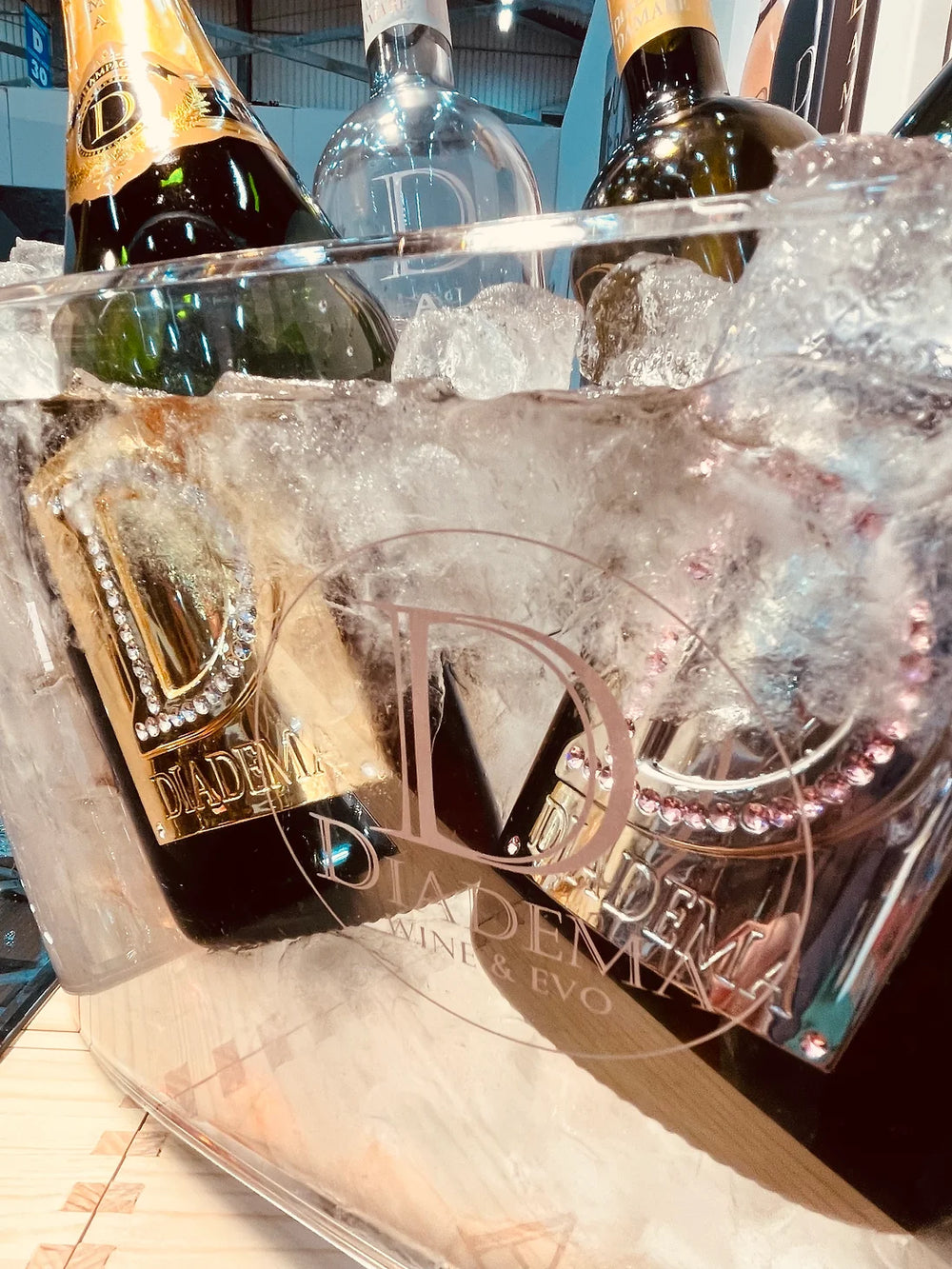AOC FRANCE – MAGNUM with GIFT BOX
TASTING NOTES
To achieve the highest complexity and full expression of its grape varieties, this cuvée is aged for up to five years before being released to our clients around the world. Only the finest wines from multiple vintages are selected for the Diadema Selected Dosage Zéro.
Pinot Noir from the prestigious village of Buxeuil makes up 67% of the blend and forms the essential backbone for taste, structure, and longevity. It offers aromas of fresh red fruit, wild strawberries, and citrus.
The remaining 33% comes from Chardonnay grown in Montgueux, adding notes of green apple, vanilla, and caramel, along with subtle hints of toasted almonds, hazelnut biscuit, brioche dough, lime, and acacia blossoms.
Though officially a sans année Champagne, it is more accurate to describe it as multi-vintage, as each bottle contains a blend of three different vintages. The two older vintages provide smoothness and depth, perfectly balancing the zesty acidity and freshness of the youngest wine.
After a brief rest in the glass, and even as it gently warms, this Champagne reveals its refined and sophisticated character.
As with all Diadema creations, freshness, complexity, and remarkable persistence are fundamental — offering immediate pleasure and the joy of following its elegant evolution in the glass throughout the evening.
Made from organically grown grapes (ECOCERT N°10/67336)
Crystals hand-applied by expert Florentine artisans.
REGION
FRANCE | Buxeuil and Montgueux (Côte de Bar)
GRAPE VARIETIES
67% Pinot Noir, 33% Chardonnay
WINEMAKING
Fermentation in stainless steel and 28% in oak barrels
MALOLACTIC FERMENTATION
Yes
DOSAGE
No dosage
ALCOHOL CONTENT
12.5% Vol
SERVING TEMPERATURE
8°–10°C










